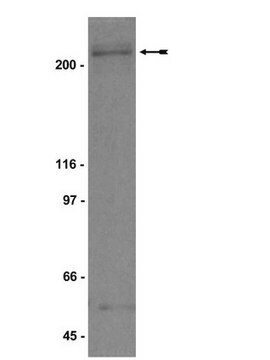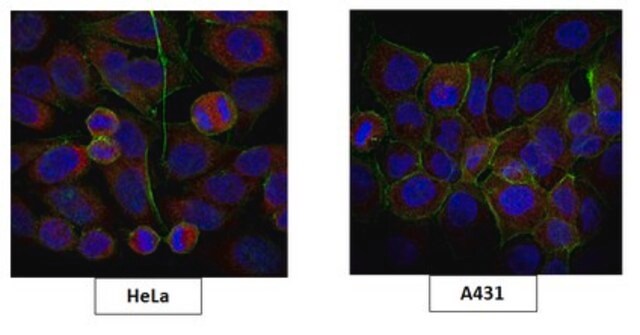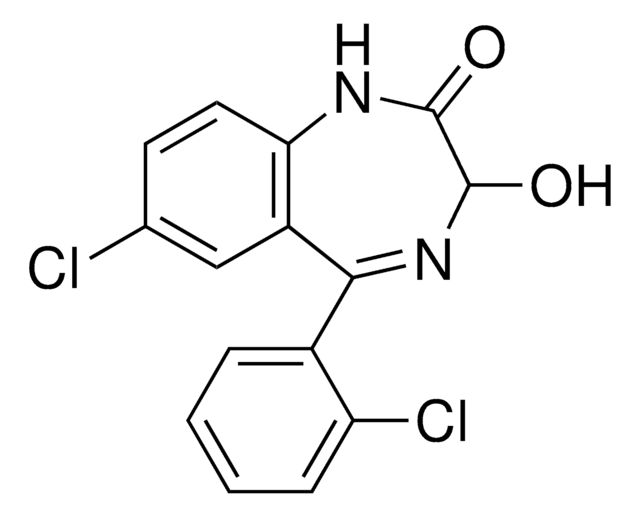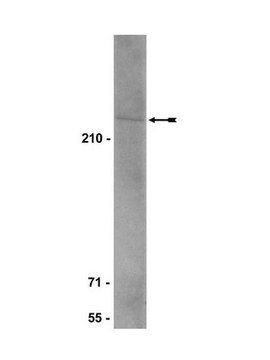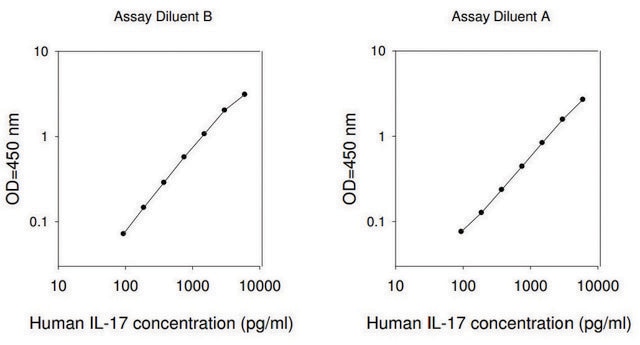PLA0185
Rabbit anti-BRCA1 Antibody, Affinity Purified
Powered by Bethyl Laboratories, Inc.
Synonim(y):
BRCAI, BRCC1, BROVCA1, Białko palca RING 53, FANCS, IRIS, Kompleks zawierający BRCA1/BRCA2, Niedokrwistość Fanconiego, PNCA4, PPP1R53, PSCP, RNF53, białko podatności na raka piersi i jajnika 1, fosfataza białkowa 1, grupa uzupełniająca S, podjednostka 1, podjednostka regulacyjna 53, rak piersi 1, skrócone białko podatności na raka piersi i jajnika 1, skrócone białko podatności na raka piersi typu 1, skrócony BRCA1, wczesny początek, wczesny rak piersi 1
About This Item
Polecane produkty
pochodzenie biologiczne
rabbit
Poziom jakości
forma przeciwciała
affinity purified immunoglobulin
rodzaj przeciwciała
primary antibodies
klasa czystości
Powered by Bethyl Laboratories, Inc.
reaktywność gatunkowa
human
stężenie
1 mg/mL
metody
immunohistochemistry: 1:500- 1:2,000
immunoprecipitation (IP): 2-10 μg/mg
western blot: 1:500- 1:2,500
nr dostępu
NP_009225.1
numer dostępu UniProt
Warunki transportu
wet ice
temp. przechowywania
2-8°C
docelowa modyfikacja potranslacyjna
unmodified
informacje o genach
rabbit ... BRCA1(672)
Immunogen
Postać fizyczna
Inne uwagi
Oświadczenie o zrzeczeniu się odpowiedzialności
Nie możesz znaleźć właściwego produktu?
Wypróbuj nasz Narzędzie selektora produktów.
Kod klasy składowania
12 - Non Combustible Liquids
Klasa zagrożenia wodnego (WGK)
nwg
Temperatura zapłonu (°F)
Not applicable
Temperatura zapłonu (°C)
Not applicable
Wybierz jedną z najnowszych wersji:
Certyfikaty analizy (CoA)
Nie widzisz odpowiedniej wersji?
Jeśli potrzebujesz konkretnej wersji, możesz wyszukać konkretny certyfikat według numeru partii lub serii.
Masz już ten produkt?
Dokumenty związane z niedawno zakupionymi produktami zostały zamieszczone w Bibliotece dokumentów.
Nasz zespół naukowców ma doświadczenie we wszystkich obszarach badań, w tym w naukach przyrodniczych, materiałoznawstwie, syntezie chemicznej, chromatografii, analityce i wielu innych dziedzinach.
Skontaktuj się z zespołem ds. pomocy technicznej